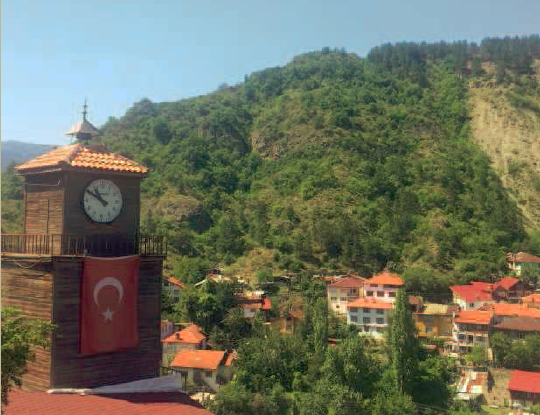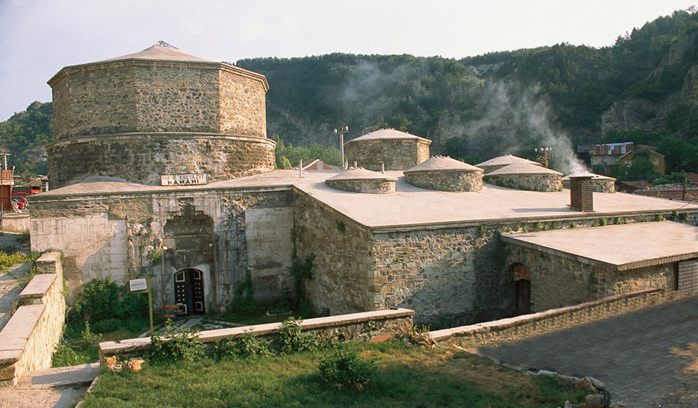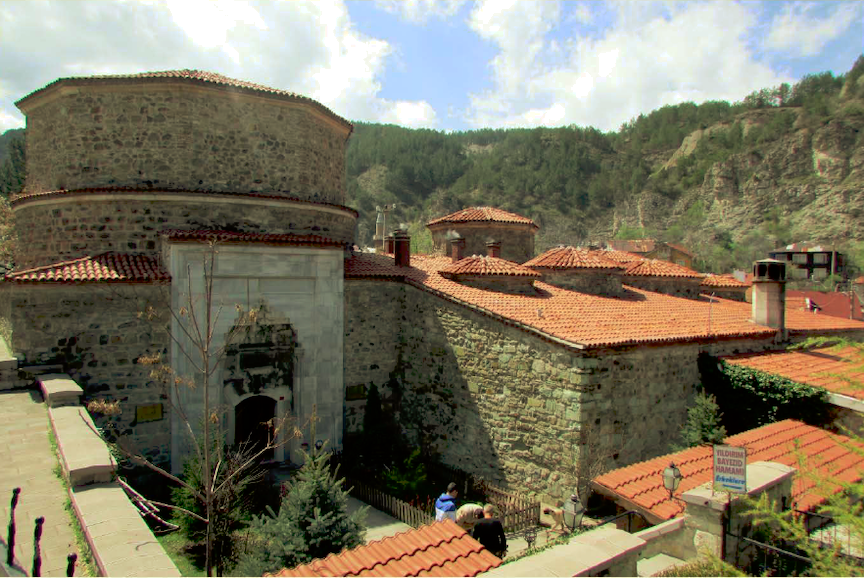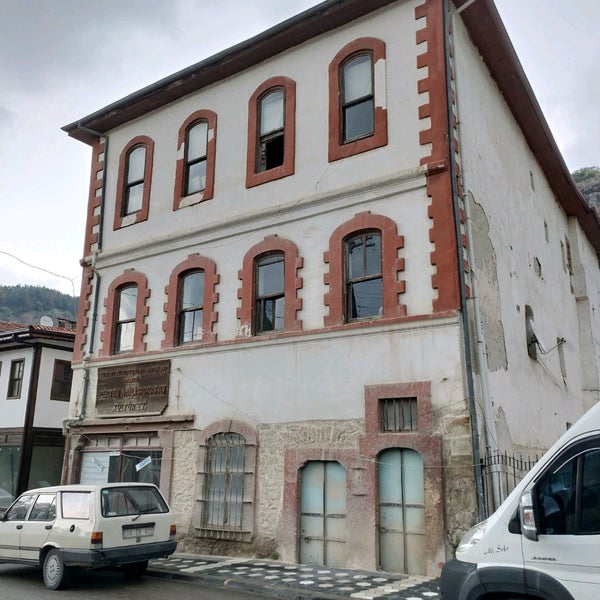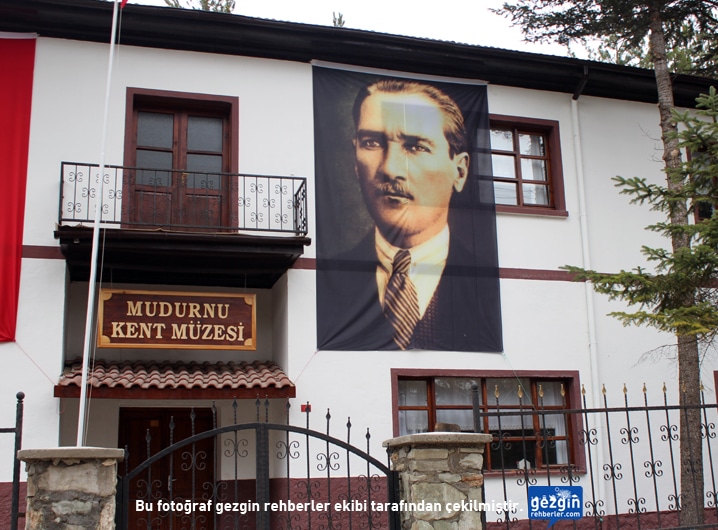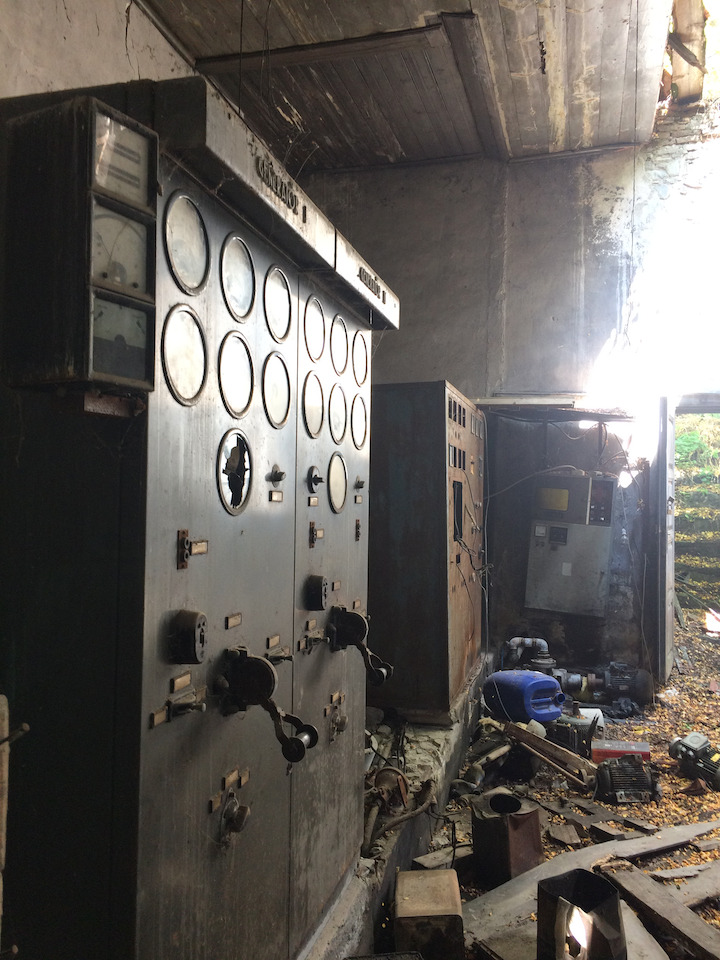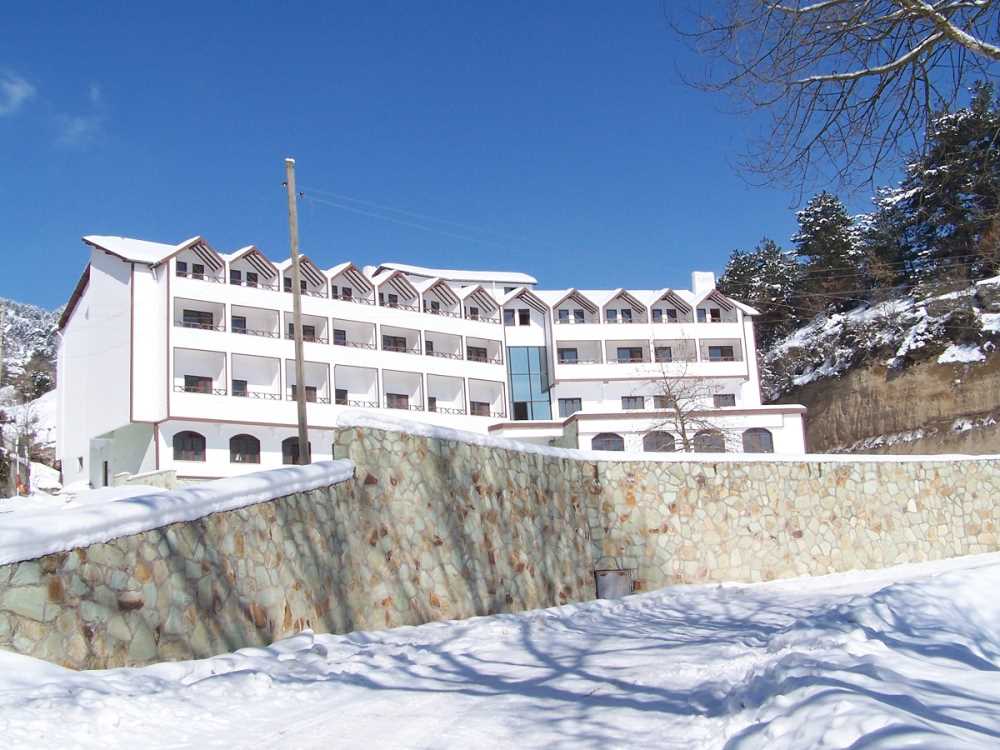Mudurnu’s Monumental and Public Cultural Heritage
Clock Tower:
It was built in wood in 1890-91 on a slope to the east of Mudurnu. As a result of the fire that broke out at the beginning of the 20th century, the inmates in Mudurnu Prison repaired the tower with stones brought from the surrounding area in 1905. The clock on the tower was made by a blacksmith from Mudurnu. Towards the end of the 20th century (1990) the exterior of the tower was covered with wood. Today, there is a restaurant near the clock tower. It is one of the best viewpoints of the district.
Mudurnu Castle:
There are ruins of castle walls on Hisar Hill, which is located in the east of Mudurnu district. The information about Mudurnu Castle, which has survived from the Byzantine period, is based on the descriptions of Evliya Çelebi, who visited Mudurnu around 1640. In the description, the castle is described as a collapsed old structure with eight corners and a gate with twenty towers.
Yıldırım Bayezid Mosque:
Yıldırım Bayezid Mosque, one of the important architectural examples of the early Ottoman period, was built in 1374 during the prince of Yıldırım Bayezid, the son of Sultan Murat I. It is located in the city center of Mudurnu, just south of Arasta. The mosque, which is open for use today, is an example of a large dome construction experiment in Ottoman architecture with its 19.50 meter diameter squinch dome design, which sits on eight rectangular wall pillars with pointed arches.
Yıldırım Bayezid Bath:
It is understood from the inscription on its door that it was built in 1382, during period of Yıldırım Bayezid, like the mosque that he created together with the kulliye. The Turkish bath is an example of an important turning point for the history of Ottoman architectural decorations.
Note: Re-operation of the Turkish bath, which is not actively used today, is important both for the survival of a cultural property and for contributing to the local economy. [Today’s date]
Kanuni Sultan Süleyman Mosque:
It is located on the edge of Mudurnu Stream, a little south of Yıldırım Bayezid Bath. The mosque, which was built by Sultan Suleyman in 1546, has a wooden ceiling and a stone wall. The ceiling of the mosque reflects the Seljuk architecture with the example of the …… ceiling.??
The garden of the mosque is arranged as a cemetery. There are tombstones and a tomb belonging to Fahreddin-i Rumi and other important people related to the Zeyniye and Halveti religious orders.
The restoration process started in 2017 by the General Directorate of Foundations and is still ongoing. The mosque is not open for worship today.
Mudurnu Ahi Museum:
Ahiler Museum, located on Belediye Street in Arasta, was opened on Friday, May 26, 2017, in Demirciler Bazaar after the Craftsman Prayer. The tools and belongings in the shop of the former ironmonger Emin İnce are exhibited in the museum. In addition, there are information boards about Akhism in the museum. The mezzanine of the museum is used as the office of the Mudurnu Site Management Presidency Office.
Ahi Museum received the Metin Sözen Conservation Grand Prize from the Historical Cities Union in 2017.
Pertev Naili Boratav Cultural Center:
One of the buildings that stand out with its unique architectural character in Arasta, the ground floor was used as the Women’s Prison until the first years of the Republic, and the upper floor was used as the District Governor’s Office. It is a building of historical importance as the place where he decided to join the movement. Today, the ground floor of the building is used for various commercial purposes, while the upper floor serves as the Pertev Naili Boratav Culture House under the supervision of Necdet Akay, the former president of Mudurnu Culture, Tourism and Solidarity Association (MUKTUDER).
Mudurnu City Museum:
The City Museum, located on Ankara Street in the south of the settlement, converted from the Former Girls’ Vocational School building and opened in 2010, is a place where many objects from the old periods are exhibited. Various ethnographic materials and copies of Ottoman period edicts taken from the Prime Ministry Archives are exhibited in the rooms of the museum. The museum received the ‘best museum’ award from the Local Authorities Magazine. However, it is not currently actively operated.
Old Energy Power Plant:
The energy power plant, where the electricity of the Mudurnu district was provided until the 1950s, is an important industrial heritage for today. The building of the power plant is located in the south of the settlement, on Elektrik Street. The old power plant and generator in the building have survived to the present day.
Note: The building, which was registered by the Ankara No. 1 Regional Council for the Protection of Cultural Heritage in 2017, is urgently need of repair.
Tanneries:
One of the unique features of the historical Ahi City Mudurnu is the Ahi-order heritage that is still alive today. The tanneries region of Mudurnu has a special importance in terms of the fact that Ahi Evran, the founder of the Ahi organization, is also a debbah. There are five tannery buildings built with original local architecture in the Tabakhaneler region, located on the edge of Mudurnu Stream, just outside the urban protected area, at the northern entrance of the Mudurnu district center. The largest of tannery building was registered by the Ankara No. 1 Regional Council for Conservation of Cultural Heritage in 2017. All tannery buildings are in urgent need of repair. This region has the potential to establish Turkey’s first leather museum.
Archaeological Park:
The old cemetery, located on A.Selahattin Baysal Caddesi in the Musalla District, south of the town center, has been transformed into an ‘archaeological park’ where the ancient monuments brought from the surrounding villages are exhibited by the Mudurnu Municipality in cooperation with the Bolu Museum Directorate. Among the works, there are pieces such as columns, sarcophagi, altars and sundials.
Şeyh-ül İmran Hill:
Seyh-ül Imran Veli Hz. located in the tomb. The tomb on this hill is open to visitors. In addition, a traditional commemoration day is held on the first Sunday of July every year on the hill, this commemoration day is also known as the Seyh-ül Imran festival. Mudurnu Municipality and Şeyh’ül Imran Culture and Promotion Foundation jointly carry out the organization of the commemoration day. Many people from various cities of Turkey visit to Şeyh’ül Imran Hill on the commemoration day. Rice with meat and watermelon are offered to the visitors. In addition to the municipality and the foundation, volunteers from Mudurnu also serve the guests.
Samsaçavuş Mosque:
The mosque, named after a ghazi named Samsa Sergeant, who was known to accompany Ertuğrul, Osman and Orhan Gazi, is located in Güveytepe Village. It is the oldest Ottoman structure within the borders of Bolu province and is one of the examples of the first period Ottoman works that survived in Anatolia. The mosque, which has a rectangular plan and was built as the Friday Masjid, has a wooden gathering-place in the east-west direction, a minbar and a mihrab, which is a good example of woodworking. The mosque was restored by the Directorate of Foundations.
Babas Thermal Bath:
Located in Gürçam village, 5 km south of Mudurnu district, the thermal bath is an isothermal hot spring with positive effects on liver, gall diseases, metabolic diseases and mild diabetes. There is Babas Spa Hotel in the Babas thermal bath.
Mudurnu Ottoman Bazaar (Arasta):
Arasta is a word of Persian origin, meaning a market where merchants doing the same business are clustered. Mudurnu ottoman bazaar is located in the center of the settlement, in Seyrancık Neighborhood. There is Yıldırım Bayezid Mosque at the south end, the Mudurnu municipality at the north end and the square in front of it.
Rebuilt in a grid plan after the fire in 1906, bazaar consists of three streets (East to west; Belediye (former Demirciler), Demirciler and Ankara Streets) running in a north-south direction parallel to the main road (Yıldırım Bayezid Caddesi) and three streets in an east-west direction ( From north to south; Hamamcılar, Hamam and Old Prison Street). Some parts of the streets have stairs according to the eastward climb of bazaar’s land. It is closed to vehicles except for motorcycle access.
In the streets of Bazaar, one and two storey wooden shops are lined. These shops traditionally belonged to handmade works such as needlepoint embroidery, coppersmiths, ironmonger, and farriery. The shops are opposite each other and although their sizes vary, they have approximately similar dimensions. In terms of plan, there is a rectangular main space and a storage or manufacturing sections behind it or on the upper floor. The most important features of the shops that have been partially preserved are their mobile counters and shutters.
Arasta, which continues to be the commercial center of the district today, also has markets and stores that meet daily needs.
Arasta, on the one hand, is a monumental structure as the whole of the shops inside and being an important central landmark of the city, on the other hand, it has the character of civil architecture as it is a texture consisting entirely of shops and the streets between them.
Within the scope of the Ahiler Museum, which was opened in 2017, the interior arrangements of the old crafts but inactive shops and the items belonging to the crafts were left, and they were transformed into exhibition areas with signboards and promotion boards. In addition, photographs of Ahmet İzzet Bengüboz were placed in various parts of Arasta in the form of large posters.
Many of the shops in Arasta are in need of repair and improvement of the facade pattern. In 2018, a façade improvement project was prepared with the support of the Historical Cities Association and is waiting to be implemented.
